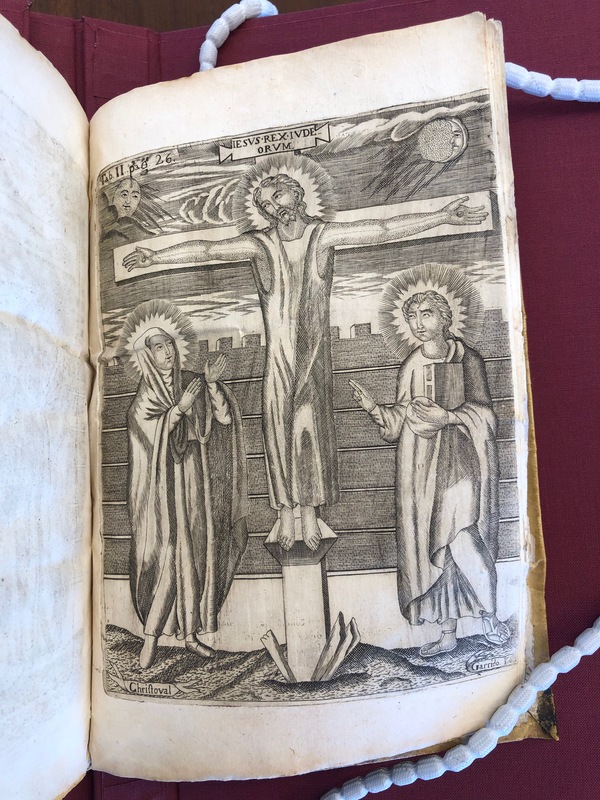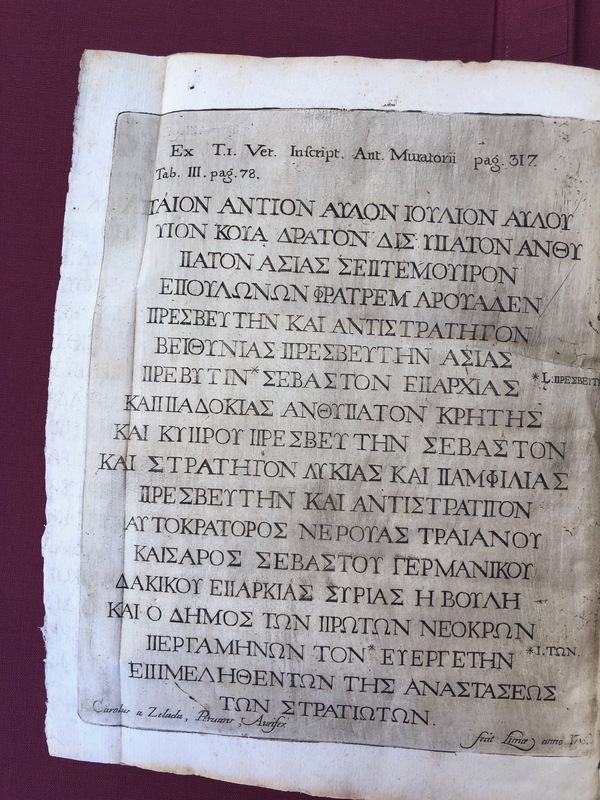The Formation of Community Surrounding the Lives of Saints
Vida de San Juan Apostal y Evangelist was published in 1761 in Lima, Peru. The book recounts the life of Saint John the Evangelist. Texts of this kind were not simply religious, as the religious autobiographies of saints helped towns and communities formulate community identity.[1] This book is luxuriously put together; bound in animal skin, the text incorporates stylistically skillful sketches from 1761 that incorporate shading, perspective, and dimension. One of the many illustrations depicts Jesus on the cross accompanied by two saints, presumably one of them being Saint John the Evangelist. The book even incorporates a fold-out page of Latin text. One can tell that this book was heavily interacted with and it may have potentially been passed down or given to another person because on the the back of the book, there is a long hand written note that is now illegible.
Analyzing the production, it can be inferred that it belonged to someone with wealth. This inference is supported by the economic conditions of 18th-century Lima. During the 1760s, there was a population increase of American-born Spaniards (Criollos), along with an influx of Iberian immigrants, which contributed to an increase in urbanization. New Spanish cities like Lima emerged as a result. Because of urbanization and wealth from profitable mining and agriculture ventures, the wealthy Criollos funded cathedrals and pious works. Because of the Criollo patronage, priests and religious personnel focused their attention on the religious needs of the Criollos.[2]
This text would have been used by Criollos as an orienting text that helped to solidify their piety. The book functions to highlight and reify the lives of saints with the purpose of giving readers examples of how to imitate the lives of saints. This sort of text would unite towns and religious groups because the text provided people with a sense of belonging and solidified religion into community identities. Thus, these texts were a vehicle toward forming identity within cities, towns, and peoples by connecting the lives of many through common religiosity.[3]
The book’s impressive production and content paired with the economic situation of Lima demonstrates that this book helped solidify community identities amongst Criollo’s in Lima.

